Co-sleeping with your baby or toddler is common but not necessarily safe. AAP (American Academy of Pediatrics) recommends against it. Let’s take a deep look at co-sleeping risks and benefits.
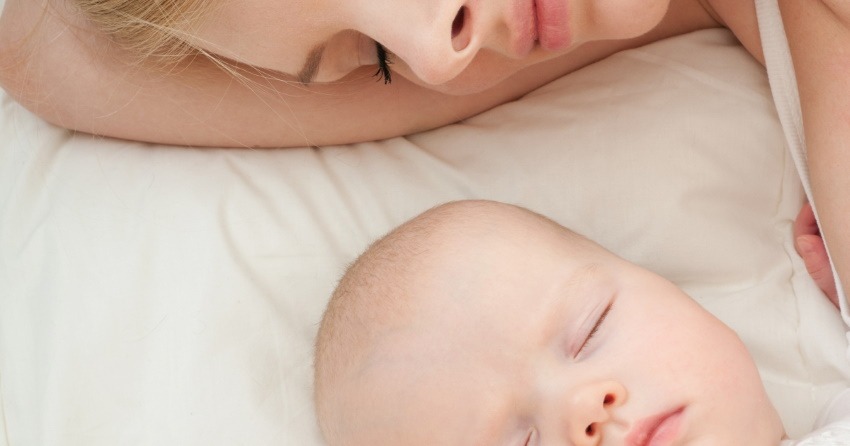
Would you consider (safe) co-sleeping with your baby?
Here, we’ll both take an honest look at various risks and benefits of co-sleeping with your baby or toddler, and we’ll go through in detail how the co-sleeping risks can be mitigated as much as possible.
Co-sleeping Risks, Benefits, and Important Risk Mitigation
In this article:
The Co-sleeping Risks
Would you consider (safe) co-sleeping with your baby?
Since the AAP (American Academy of Pediatrics) strongly advised against it, co-sleeping has become something many parents fear. However, polls indicate that up to 70% of all parents occasionally bring their babies and older children in their family beds.
Co-sleeping does indeed come with a risk, particularly an increased risk for Sudden Infant Death Syndrome. There are other risks as well, such as suffocation, strangulation, and entrapment.
These serious risks must be considered and handled if you consider co-sleeping with your baby.
The Co-sleeping Benefits
While co-sleeping does come with risks, it also has some benefits that are especially alluring when you are a tired parent. If this wasn’t the case, of course, co-sleeping would not be as common.
Some organizations, such as the Academy of Breastfeeding Medicine, support bed-sharing as long as safe sleep rules (as outlined below) are followed. They state that “Existing evidence does not support the conclusion that bed-sharing among breastfeeding infants (i.e., breast-sleeping) causes sudden infant death syndrome (SIDS) in the absence of known hazards.” (Reference found below the article)
Babies and older children often sleep a lot better if they are sleeping next to their parents. Babies also often fall asleep faster when sleeping next to their parents.
Many parents, especially new moms who breastfeed at night, also get substantially more sleep by keeping the baby in their own bed.
Breastfeeding at night is easier when the baby is sleeping beside you as there is no getting up all the time to pick up the baby.
It is also shown that co-sleeping is associated with more frequent nighttime feeds, promoting milk production. Several studies also show that bed-sharing is associated with more months of breastfeeding.
Parents who bed-share often say that sleeping beside their baby comforts them and makes them feel closer to their baby.
10 Guidelines to Mitigate Co-sleeping Risks
Recently, AAP has adjusted its sleep guidelines, acknowledging the fact that co-sleeping still happens. Sometimes a tired mother falls asleep during nursing, no matter how much she tries to stay awake. To help parents to minimize the risks in case they co-sleep with their baby at some point, AAP provided co-sleeping guidelines.
It needs to be mentioned that AAP still emphasizes that the safest sleeping practice is to have the baby sleep in the parents’ bedroom, near the parents’ bed but on a separate surface designed for infants. It is also strongly recommended that the baby sleeps in the parents’ bedroom at least until 6 months of age, but ideally until the baby’s first birthday.
However, if you decide to co-sleep with your baby, learn how to do it in the safest way possible.
Below you’ll find a number of ways to improve co-sleeping safety. If you follow these guidelines, you’ll reduce the risks significantly. Also, always consult your baby’s doctor if you are worried about your child’s safety.
First, check this short video for a visual summary of the most important guidelines for safe co-sleeping.
1. Baby’s age and weight
At what age is co-sleeping safe?
Avoid co-sleeping if your baby was born prematurely or with a low birth weight. If your baby is born full-term and has a normal weight, you should still avoid co-sleeping with a baby younger than four months.
Even if the baby is breastfed, the risk of SIDS is still increased when bed-sharing if the baby is younger than four months. Breastfeeding has been shown to reduce the risk of SIDS. However, breastfeeding can’t fully protect against the higher risk of bed-sharing.
Once your baby is a toddler, the risk of SIDS decreases significantly, so co-sleeping at that age is much safer.
2. No smoking, drugs, or alcohol
Smoking is well documented to increase the risk of SIDS. Therefore, babies who are already at higher risk of SIDS due to their parents’ smoking habits should not share the bed with their parents (even if the parents don’t smoke in the bedroom or the bed).
The same goes if the mother has smoked during pregnancy. According to research, the risk of SIDS is more than two times greater for babies whose mothers smoked during pregnancy. The chemicals in the smoke compromise the baby’s ability to arouse, for example, during apnea.
Alcohol, drugs, and some medication make you sleep heavier, putting you at risk of harming your baby or not waking up fast enough. Don’t co-sleep with your baby if your alertness or the ability to react quickly is impaired.
3. Back to sleep
Always place your baby on the back for sleep, both for naps and during the night. This rule applies both when your baby is sleeping on their own sleep surface, such as a crib, bassinet, or in a sidecar arrangement, and when they are sharing the bed with you.
If you accidentally fall asleep during nursing, and your baby fell asleep on their side, place them on their back as soon as you wake up.
4. Make sure your baby can’t fall down
It may seem to you that there is absolutely no way your newborn will move close enough to the edge to fall out of the bed. But don’t count on it. One day (or night) will be the first time your baby rolls over or makes some other type of movement.
It has been observed that breastfeeding mothers adopt a specific C-position (“cuddle curl”) when sleeping with their babies so that the infant’s head is across the mother’s breast, and the mother’s arms and legs are curled around the infant. It is important that the baby sleeps on their back, even if the mom is in the C-position, and that there is no loose bedding on the bed. According to the Academy of Breastfeeding Medicine, this is the optimal safe sleep position.
The Academy of Breastfeeding Medicine also states: “There is insufficient evidence to make recommendations on multiple bed sharers or the position of the infant in bed with respect to both parents in the absence of hazardous circumstances.”
5. Make sure your baby does not get too warm
Sleeping close to you is warm and cozy for your baby. However, a warm blanket, in addition to your body heat, can be too much.
Overheating is proven to increase the risk of SIDS. For this reason, you also shouldn’t swaddle your baby when co-sleeping. In addition to increasing the risk of SIDS, swaddling the baby when bed-sharing makes it impossible for the baby to use its arms and legs to alert the parent if they get too close and prevents them from moving the bedding from their faces.
Therefore, the best you can do when bed-sharing is to dress warm enough to sleep without a blanket. This way, neither you nor the baby will become overheated, and you’ll reduce the risk of suffocation.
If you breastfeed, invest in a good nursing top or two for sleeping, or use the one you had during the day instead of throwing it in the laundry. Also, wear trousers and socks if necessary. You shouldn’t wear clothes with long loose strings since your baby can get tangled in them. If you have long hair, tie it up so it doesn’t wrap around the baby’s neck.
6. Beware of pillows and blankets
All types of pillows and blankets are a potential risk for your baby, as they may land on top of the infant and make it difficult for them to get enough oxygen.
Remove any loose bedding, bumpers, nursing pillows, or any soft objects that may increase the risk of suffocation, strangulation, or entrapment. Also, ensure the sheets are tight-fitting and can’t become loose. AAP states that a large percentage of babies who die of SIDS are found with their heads covered by bedding.
If it is hopeless for you to sleep without a pillow, at least use only one and make sure you keep your head on it.
7. Beware of very soft beds, armchairs, and sofas
Don’t co-sleep with your baby if your bed is very soft (including water beds, air mattresses, and similar). The risk is that your infant will roll over towards you, onto their belly.
Belly sleeping is shown to be a significant risk factor for SIDS, especially among babies who are too young to be able to roll from stomach to back on their own. Therefore, a flat and firm mattress is needed.
You must never sleep with your baby on the armchair, couch, or sofa. These pose a great risk to the baby’s safety and significantly increase the risk of infant death, including SIDS and suffocation due to entrapment. If you are, for example, sitting in an armchair when you breastfeed your baby, make sure you don’t fall asleep.
8. Consider your weight
Consider your own (and your spouse’s) weight. If either of you is quite heavy, there is a greater chance that your baby will roll towards you, increasing their risk of rolling over to their belly without being able to roll back.
If the parent is obese, there is a possibility that they won’t be able to feel how close the baby is to their body, which may put the baby at risk. Therefore, the baby should sleep on a separate sleep surface in such a case.
9. Consider your sleep pattern
Consider your own and your spouse’s sleep patterns. If either of you is a deep sleeper or gets overly tired, your baby should not share the bed with that person. Moms usually tend to wake up very easily and at any noise or movement by their baby, but there is no guarantee that this will happen. If you don’t wake up easily at night due to your baby’s sounds, it may not be safe for the two of you to sleep together.
Often, unfortunately, dads don’t wake up as quickly, especially if the mom is the only one attending to the baby at night. When I’ve co-slept with my infants, I have always awakened my husband in the middle of the night to tell him that our baby is now in our bed. (I would always start with putting my babies in their own beds and then put them in mine during the night if needed, but this was before the recommendations changed. I am not quite sure how I would act today.)
Older siblings should not sleep with babies under a year old in the family bed. Older children (2 years or so) can sleep together without great risks. Keep the children on different sides of the adults to ensure safe co-sleeping.
10. A large enough bed
Safe co-sleeping with your baby is only possible if your bed is large enough to provide room for you or all of you. Ideally, move away from your baby a bit during the night for safety reasons, but also to improve your sleep and to not make your baby completely dependent on your body contact for sleeping.
Alternatives to the true family bed
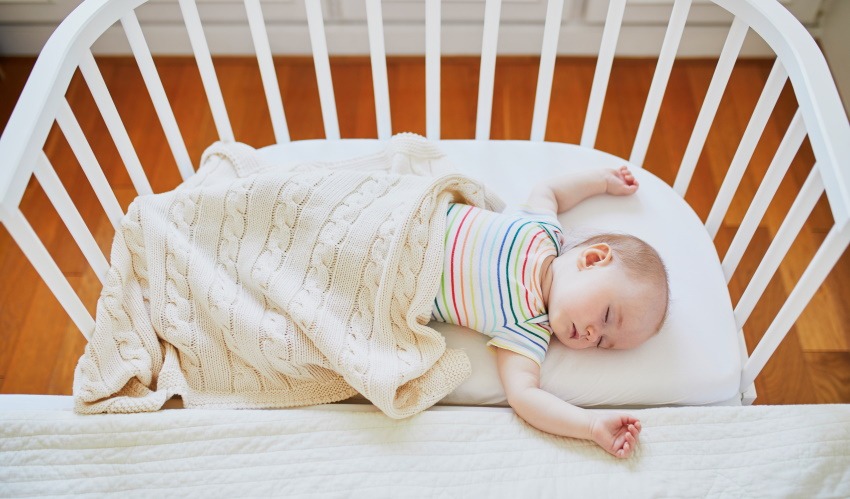
Research indicates that room-sharing without bed-sharing lowers the risk of SIDS by as much as 50%. Putting the baby on their own sleep surface for sleep also decreases the risk of suffocation, strangulation, and entrapment that may happen when the baby and the parent(s) are sharing a bed.
Keeping your baby in your bedroom near you but in their own crib or bassinet is the best way to avoid the potential risks of bed-sharing, but it still allows you to keep your baby close.
If you think true co-sleeping may be too unsafe but still want your baby to be as close to you as possible, you can always consider some kind of sidecar arrangement.
According to AAP, “The task force cannot make a recommendation for or against the use of either bedside sleepers or in-bed sleepers, because there have been no studies examining the association between these products and SIDS or unintentional injury and death, including suffocation.”
You can consider using a crib that comes with the option to pull down one side or even take it off and place the crib right next to your bed. Then, tie it to the main bed with some sort of cord.
Another option is to use some sort of co-sleeping bassinet that aims at creating a safe sleep environment for your baby. They come in different designs, such as the snuggle nest, the so-called wahakura, or a Pepi-pod, more common in New Zealand. They can all be placed on your bed. That way, your baby stays near you but is still protected and has its own place to sleep.
Wahakura is a flax-woven bassinet, while Pepi-pod is made from polypropylene plastic. Both can be fitted with a mattress, but the mattress must be of the appropriate size. There should be no gaps between the mattress and the wahakura or Pepi-pod’s sides because the baby may roll over and become trapped in the gap.
If you decide to use a sidecar arrangement, wahakura, Pepi-pod, or similar, ensure you still follow the guidelines for safe sleep.
Takeaway
Whether to bed-share with your baby or not is a personal decision, but it is important to be informed of expert advice on the risks and benefits of co-sleeping before you decide. If you follow the safe sleeping guidelines, the co-sleeping risks are certainly reduced but not necessarily eliminated. But it is still a fact that most new parents do co-sleep with their babies and toddlers to some extent.
So how do you feel about co-sleeping? Please share your thoughts below.
Read Next
- 7 Tips When Baby Refuses Crib Sleeping – For a Happy, Peaceful Baby!
- 8-Month-Old Won’t Sleep In His Crib: What To Do?
- What if I’m Nursing Baby To Sleep – Is it Good Or Bad?
Research on Co-sleeping Safety
- TASK FORCE ON SUDDEN INFANT DEATH SYNDROME, Rachel Y. Moon, Robert A. Darnall, Lori Feldman-Winter, Michael H. Goodstein, Fern R. Hauck; SIDS and Other Sleep-Related Infant Deaths: SIDS and other sleep-related infant deaths: Updated 2016 recommendations for a safe infant sleep environment. Pediatrics,138(5).
- Swaddling for sleep. (n.d.). Basis: Baby sleep info source.
- Bedsharing and breastfeeding: The Academy of Breastfeeding Medicine protocol #6, revision 2019. Breastfeeding Medicine, 15(1). (2020)
- Bed-Sharing in the Absence of Hazardous Circumstances: Is There a Risk of Sudden Infant Death Syndrome?
- Benefits and Harms Associated With the Practice of Bed Sharing

Paula Dennholt founded Easy Baby Life in 2006 and has been a passionate parenting and pregnancy writer since then. Her parenting approach and writing are based on studies in cognitive-behavioral models and therapy for children and her experience as a mother and stepmother. Life as a parent has convinced her of how crucial it is to put relationships before rules. She strongly believes in positive parenting and a science-based approach.
Paula cooperates with a team of pediatricians who assist in reviewing and writing articles.

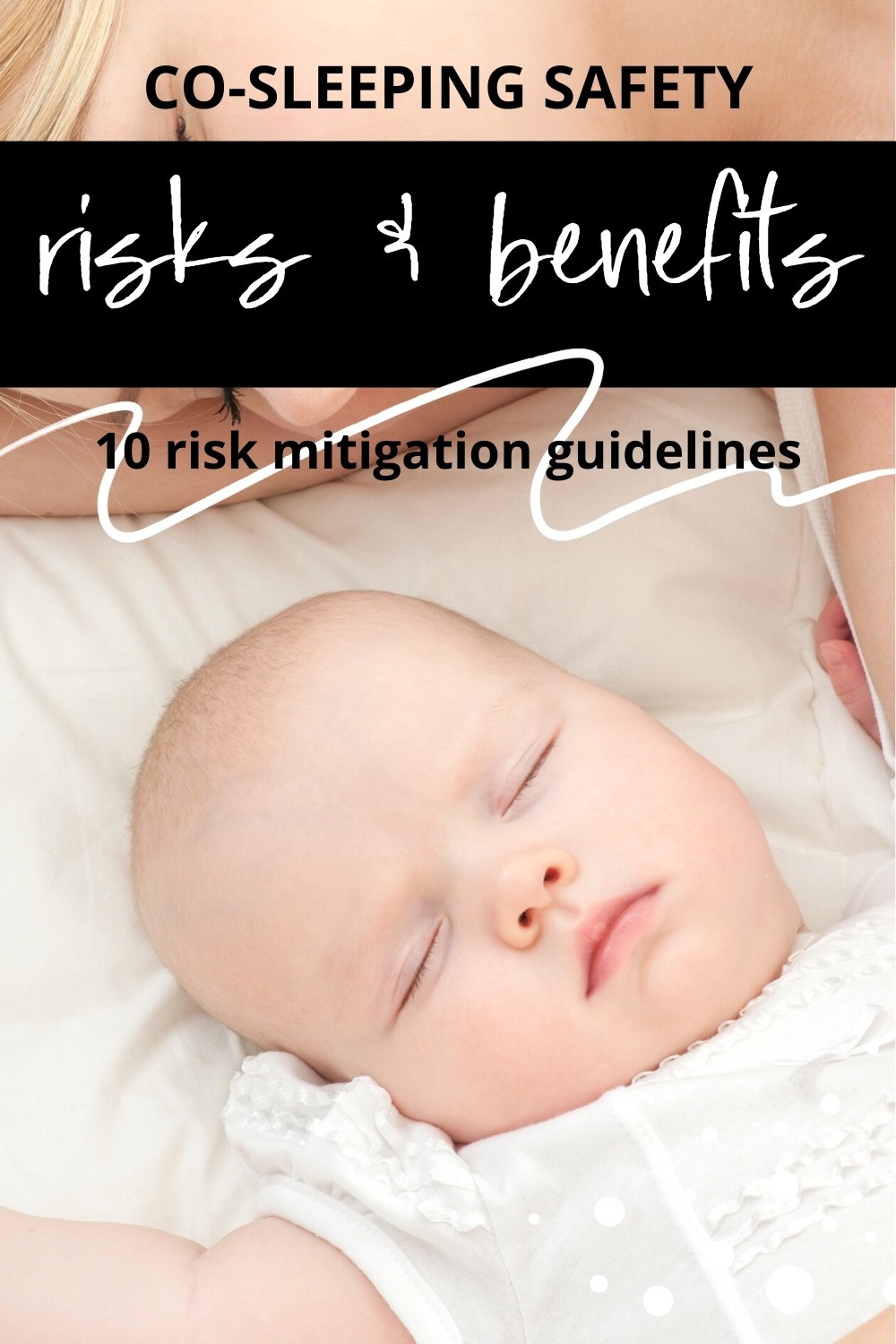
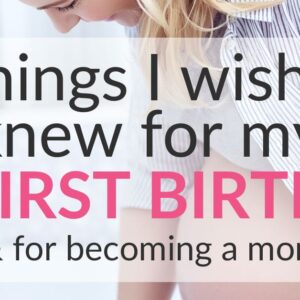
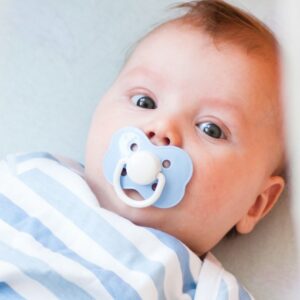




Great article, actually if you dress your baby with a good sleep gown and security blanket — keep their diaper clear & dry. This is already enough give the baby good sleep. I bought a few quality items sleep gown & organic security blanket online at eottoncanada.com
Great! we must ensure these:
AFE CO-SLEEPING CHECKLIST
Make sure your baby can’t fall out
No smoking, drugs or alcohol
Make sure your baby does not get too warm
Beware of pillows and blankets
Beware of very soft beds
Consider your weight
Consider your sleep pattern
A large enough bed
Alternatives to the true family bed